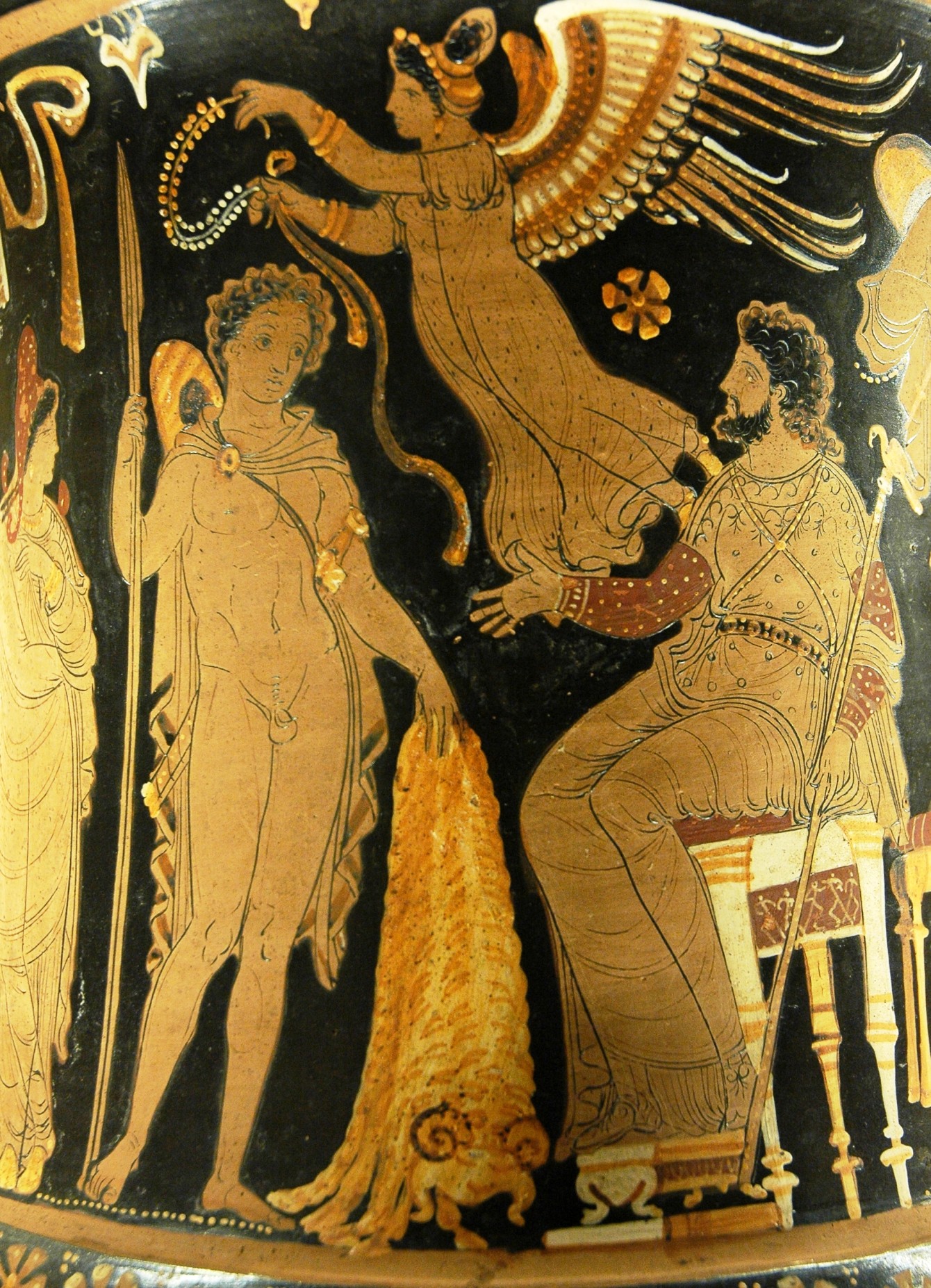
The story of Jason and the Argonauts is one of the most famous stories in Greek mythology. It is a classic quest story, and the goal at the end of the quest is the Golden Fleece. This is what Jason had been sent to obtain from the ancient land of Colchis in what is now Georgia. But was the Golden Fleece real, like certain other things from Greek mythology have turned out to be?
What was the Golden Fleece mentioned in Greek mythology?
First of all, let us clarify what the Golden Fleece actually was in the story. The Golden Fleece was the fleece of a specific ram named Chrysomallos. This ram was the son of Poseidon, god of the sea.
A cloud nymph named Nephele sent the ram to save her twin children, Phrixus and Helle, from being sacrificed. The ram did this successfully, but as it was bringing the twins to safety in Colchis, (the western part of modern-day Georgia) Helle fell off its back and drowned in the sea. After Phrixus and the ram arrived in Colchis, Phrixus slaughtered the ram and gave it as a gift to Aeëtes, a king of Colchis. The king hung it up on a tree in a sacred grove, where it was guarded by a dragon.
In the story of Jason and the Argonauts, Jason arrives in Colchis to claim the fleece. The king agrees to give it to him if he can complete several dangerous tasks. In the end, Jason is able to get the fleece by using a magic potion that puts the dragon to sleep.
Theories about the Golden Fleece
There are all sorts of theories about the origin of the story of Jason and the Argonauts trying to get the Golden Fleece. For example, one theory is that it represents royal power.
Interestingly, King Aeëtes explodes with rage when Jason first tells him that he wants the fleece. He accuses Jason and his men of coming to steal the throne of Colchis. This could give some support to this theory that the Golden Fleece represented royal power.
However, the fact that the point of the voyage was always to take the Golden Fleece and bring it back to Greece, rather than stay and rule in the kingdom of Colchis, indicates that this theory is not correct.
Another theory is that it represented a special breed of sheep that was only found in Colchis. However, stories about stealing flocks or herds of animals are not uncommon in Greek mythology. Therefore, if that was the point of the story of Jason and the Argonauts, then why not simply present it as that?
Ram Worship in Georgia
Undoubtedly, the real explanation is something which applies specifically to the ancient country of Colchis. Additionally, it does not make sense for it to represent something which was commonly presented in plain terms in Greek mythology.
Interestingly, historical information about ancient practices in Colchis reveal the answer to this mystery. Ancient Greek writers knew Colchis to be renowned for its production of gold items, because the mineral is so common there. What we also know is that rams were sacred there.
Dozens upon dozens of relics proving the worship of rams have been found in Georgia. It was clearly a very sacred animal to the Svans, an ethnic group in Svanetia, a mountainous region of Colchis. The Svans even have their own folk tale of a golden ram tethered in a cave, guarding a treasure.
The Real Golden Fleece
As well as viewing rams as sacred, the region of Svanetia in Georgia is also the main source of Colchis’ gold. The way in which the gold was collected (which is still done today) is very significant. Strabo, the Greek geographer of the first century BCE, wrote regarding this region:
“It is said that in their country gold is carried down by the mountain-torrents, and that the barbarians obtain it by means of perforated troughs and fleecy skins.”
That’s right – sheep skins were used to collect gold dust flowing down mountain streams. From modern workers, we know that the fleeces in question can occasionally become so thoroughly coated with gold dust that they can truly be referred to as ‘golden’. According to Strabo himself, the ancient Greeks believed that this was the origin of the Golden Fleece. This explanation is very logical, because this was something which was peculiar to the people of Colchis.
Does This Explanation Really Make Sense?
But why would an item used in a type of manual labor become a special, sacred item in a legend? Remember, the very same people who engaged in this practice also viewed the ram as a sacred animal. Numerous cult objects depicting the ram have been found in their territory. Therefore, it would not surprising at all if the people of this mountainous region viewed such a ‘golden fleece’ as a potentially sacred object.
This being the case, they may have given one as a gift to a nearby king. This ties in well with the story of King Aeëtes receiving the Golden Fleece as a gift.
See all the latest news from Greece and the world at Greekreporter.com. Contact our newsroom to report an update or send your story, photos and videos. Follow GR on Google News and subscribe here to our daily email!



